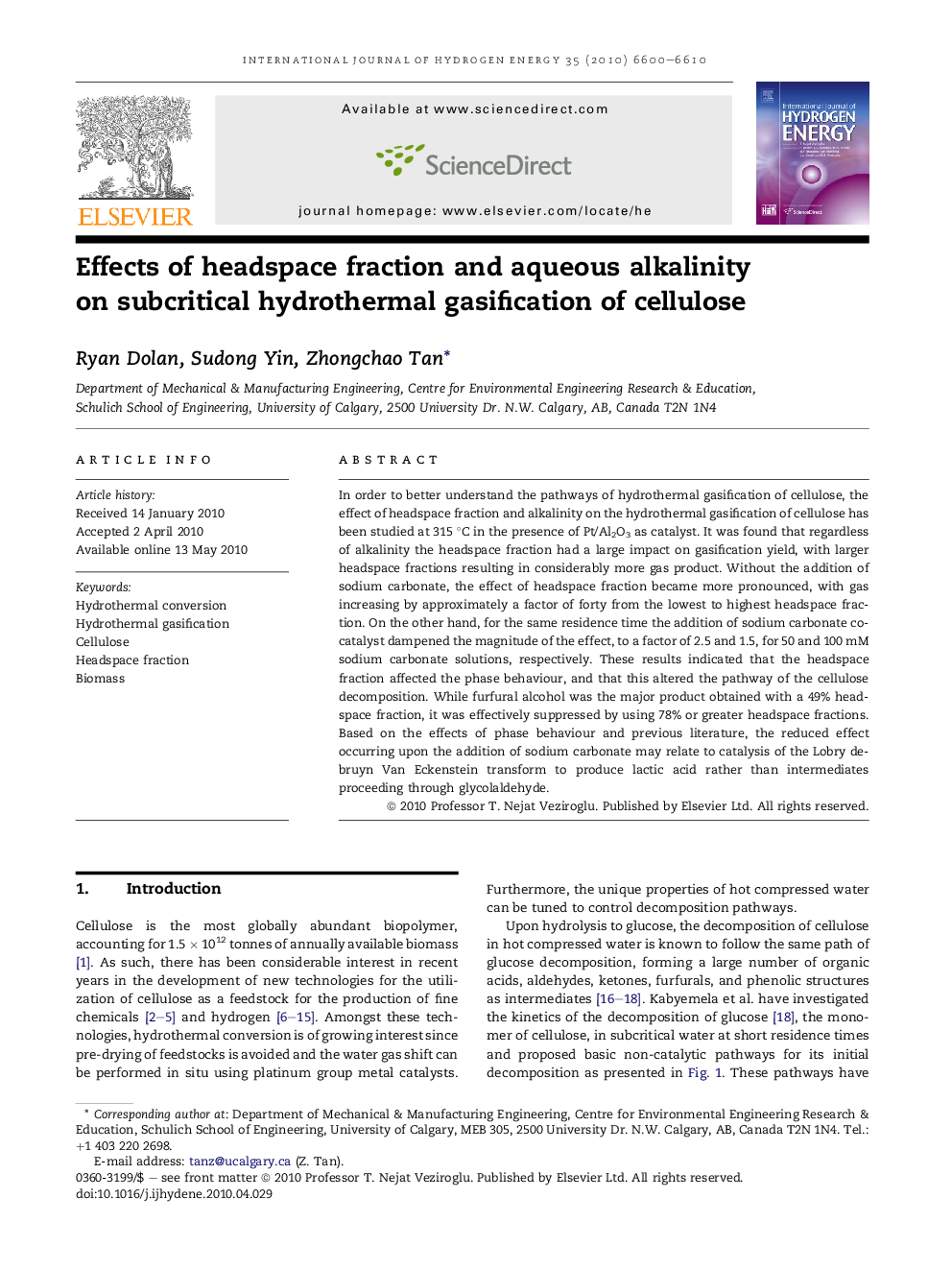| Article ID | Journal | Published Year | Pages | File Type |
|---|---|---|---|---|
| 1272894 | International Journal of Hydrogen Energy | 2010 | 11 Pages |
In order to better understand the pathways of hydrothermal gasification of cellulose, the effect of headspace fraction and alkalinity on the hydrothermal gasification of cellulose has been studied at 315 °C in the presence of Pt/Al2O3 as catalyst. It was found that regardless of alkalinity the headspace fraction had a large impact on gasification yield, with larger headspace fractions resulting in considerably more gas product. Without the addition of sodium carbonate, the effect of headspace fraction became more pronounced, with gas increasing by approximately a factor of forty from the lowest to highest headspace fraction. On the other hand, for the same residence time the addition of sodium carbonate co-catalyst dampened the magnitude of the effect, to a factor of 2.5 and 1.5, for 50 and 100 mM sodium carbonate solutions, respectively. These results indicated that the headspace fraction affected the phase behaviour, and that this altered the pathway of the cellulose decomposition. While furfural alcohol was the major product obtained with a 49% headspace fraction, it was effectively suppressed by using 78% or greater headspace fractions. Based on the effects of phase behaviour and previous literature, the reduced effect occurring upon the addition of sodium carbonate may relate to catalysis of the Lobry de-bruyn Van Eckenstein transform to produce lactic acid rather than intermediates proceeding through glycolaldehyde.
